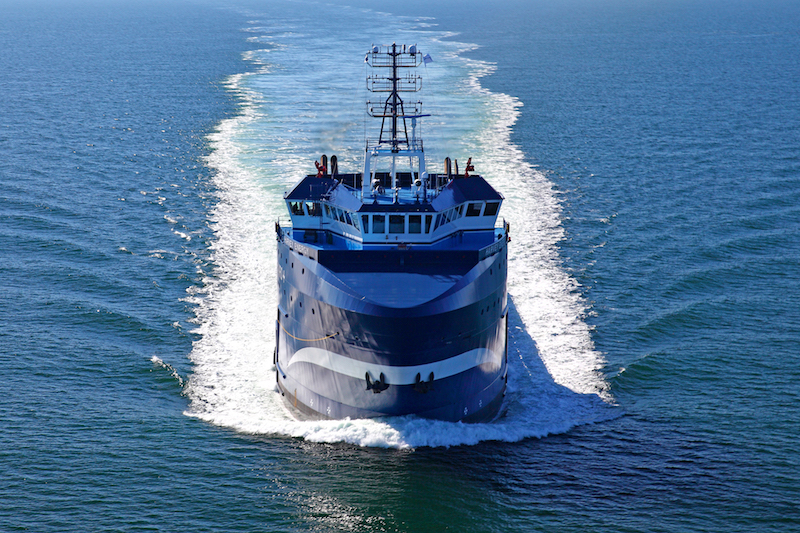The day has finally arrived for companies in the deepwater oilfield, especially offshore service vessel (OSV) operators, when they can put a halt to their strategic retrenchments and start planning for what may become a rapidly expanding market.
This will be true worldwide as oil demand and prices rise, but it will apply especially to the U.S. Gulf, where a convergence of technology, good fortune, politics and infrastructure may soon offer a perfect storm of opportunity for U.S. OSV operators.
First, advances in drilling technology have been matched by advances in support-vessel design and construction. Cutting edge vessels like the 310'x64' Harvey Energy, the first U.S. LNG-powered OSV delivered in 2015, demonstrate how farsighted deepwater OSV companies can adapt to new opportunities — like cheap natural gas for bunkers — as well as new challenges. So getting hydrocarbons out of the seabed in depths unimaginable to the hands on the Mr. Charlie in 1949 is well within our capability today.
Second, at least for the U.S. Gulf, good fortune comes in many forms. Huge new discoveries in the deepwater Gulf make the higher costs and risks in drilling at those depths more reasonable. The Feb. 1 blog by G. Allen Brooks on WorkBoat.com details some major recent discoveries in the Western Gulf, including a strike by Chevron’s Whale well at 23,000' drilling depth, about 200 miles southwest of Houston. Added to the proven production of Shell’s Perdido platform and the close proximity of other developing Western Gulf regions, and you have a new deepwater oilfield that, in some ways, will be easier and cheaper to service than the mid-Gulf fields.
Add to that significant discoveries in Mexico’s waters — which join U.S. waters (in terms of drilling rights) at a point 200 miles east of Brownsville, Texas, — and the Mexican government’s groundbreaking decision to allow foreign companies to participate in deepwater drilling, and you have a demand for oilfield services that could quickly exceed infrastructure capacity.
And then there’s the Bureau of Ocean Energy Management’s planned offshore lease sale next month that the Trump administration predicts will be the largest in history. Fraught with controversy — including California’s vow that nary a drop of offshore oil will cross its shores and the administration’s curious agreement to exempt Florida — the sale will nonetheless reflect the major oil companies’ perception that demand for oil is going to explode.
Certainly, OSV company planners can’t ignore politics. With the Trump administration on a jihad to roll back regulations generally and offshore-oilfield regulations specifically, service companies in the U.S. Gulf may find themselves breathing the friendliest regulatory air in decades. And the benefits don’t stop there. Demand for oil is driven by industry, not residential use, and industry had been in the doldrums for a decade. Pent-up demand and deregulation across the board will spur industrial output and place additional demands on oil supply. This, coupled with changes in corporate taxation, will spur investment in offshore drilling and, inevitably, in demand for offshore service and supply.
The competition to sell oil will remain fierce, especially with growing competition from landside fracking. But of all the costs in producing a barrel of oil, infrastructure is one of the biggest: many large oilfields in Africa remain undeveloped due to lack of infrastructure. But the U.S. Gulf is a mature, highly developed oilfield with a number of full-service shore facilities: Port Fourchon, La., for example — centrally located for the entire Gulf — has grown quickly from a network of sleepy canals almost inaccessible by land to a large, bustling deepwater port with its own causeway. And farther west, it’s not inconceivable that U.S. ports like Port Arthur, Texas, could prove better supply points for the far-offshore Mexican oilfield than corruption-ridden, shallow-draft Mexican ports.
Clearly, for OSV operators and other deepwater offshore suppliers in the U.S. Gulf who survived the downturn, it’s a wonderful time to be alive.




